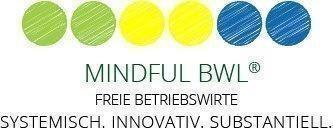What makes this concept so useful for your professional life?
The concept of the four languages of appreciation in everyday working life reveals a possibility to make professional relationships more prosperous. Have you ever asked yourself one of the following questions?
“Do I still feel comfortable with what I do here every day?”
“Is my performance adequately valued?”
“Am I in the right place with my personality?”
“Do I have enough room to act with my entire personality on my own responsibility?”
Then you surely understand what appreciation can do in the workplace. In fact, appreciative relationships have a significant share in the company’s success. Gary Chapman and Paul White developed their concept, which was published in 2013. Both authors have put forward a thesis in this regard:
“The most important factor influencing job satisfaction is not the compensation, but the recognition and appreciation that the person experiences in the workplace.”
(Gary Chapman and Paul White)
In view of acute shortage of skilled workers medium-sized enterprises (SMEs) in particular are under heavy pressure. Therefore, it is necessary to deal professionally with appreciation in everyday professional life. In this context, measurable indicators can be derived from the company key figures: e.g. staff turnover and associated costs, employee absenteeism, revenues / work per employee or project lead times. These indicators can help to identify early on whether there is any need for action. In addition, an employee survey can provide certainty about the extent to which employee appreciation is important.
Leadership with appreciation in everyday professional life
The concept of four languages of appreciation applies directly to leaders and is accessible to the mindfulness principle. At the same time it has an impact on the corporate culture, i.e. it interacts informally with social norms on the behavior of each individual within a system. In any case, the goal is to value the achievements and results of each person in an individual way. At the same time, well-conveyed appreciation strengthens cooperation and mutual support within the group. Is there anything better than waking up early and looking forward to his work and colleagues?

Focusing on certain personality types keeps individuality in the centre. As individual as the strengths and challenges, as differentiated is the appreciation for the individual. It is a chance to give employees recognition according to their needs. The most important thing is to act with living sincerity and authenticity. As soon as this is ignored, exactly the opposite happens: the well-intentioned attempt causes an uneasy feeling – the work done is not appreciated.
Guidance with mindfulness in your work life
Especially for leaders, a mindful attitude offers the potential to fully experience, appreciate, and live ones life. First of all, it is helpful to allow yourself to be truly touched by what is emotionally rising. It is an act of hospitality to deal with the rising emotions – be it joy or suffering – with mindfulness. It then requires a training of the mind and the heart. As a result, executives – reconciled with themselves – are able to cultivate appreciative relationships. Because reconciliation, which is respectful in nature, makes people humble. When executives focus on mindfulness in this way, everything becomes close and obvious, vibrantly real.

What if leader combine their attentive attitude with the concept of how to form appreciative relationships? The executive has the following four ways of expressing his appreciation in everyday professional life:
- Praise and recognition
- To-take-time
- Helpfulness
- Gifts
The four languages of appreciation in everyday professional life
First of all, the language of appreciation by “praise and recognition”. Whereby, a commendation refers to a specific performance of the employee, who has done something special. It is important that the praise is concrete and personal. It has to be formulated exactly what the individual employee has specifically done well. In addition, the manager considers whether to pronounce the praise in front of colleagues or in a private conversation.
Secondly, the language of appreciation by “taking time”. The core idea is that you take the time to listen to the employee and find out what is on his mind. From this, the listener develops more understanding of the employee’s situation and can express appreciation more specifically. Thinking about joint solutions is also part of the appreciative relationship.
Thirdly, the language of appreciation as “helpfulness” promotes collegiality in the workplace. This appreciative language shapes the corporate culture and behavior of each individual within the system. The people in the system develop a sense of when a colleague needs help. In addition, the willingness for mutual support is sufficiently pronounced.
Fourth, the language of appreciation by means of “gifts”. Attention! It’s not as easy as it sounds at first. Because gifts are not just gifts. For it can even have a negative effect on employee satisfaction, if the executive selects an inappropriate or impersonal gift. Therefore, one requirement is that one knows and can rate the recipient.

Which language of appreciation does an employee need in professional life?
The concept of four languages of appreciation provides a tool for long-term use. Some employees prefer the language “praise and recognition” or “taking time”. Other employees feel appreciation in receiving “helpfulness” or “gifts.” As a result, each employee has a preferred language of appreciation, which corresponds to ones “mother tongue”. This “languages” satisfies a person to the fullest. In addition, he or she masters this language best when dealing with others.
Here are two specific examples:
A:
The manager prefers the language “praise and recognition”. In contrast, the employee prefers the language “helpfulness”. Out of a natural impulse, the leader does what she likes the most. Therefore, she praises the employee for the excellent work. Although the employee can classify this as a “nice gesture”, but as appreciative, he would have felt a honest question for help with meeting deadlines.
B:
Next, the opposite situation: the manager prefers the language “helpfulness”. In contrast, the employee responds to “praise and recognition”. In the first attempt, the manager offers well-meaning assistance in meeting deadlines. This gives the employee the feeling that he is not doing it alone – a contempt. The good intention goes wrong. Most likely, the appointment is not kept.
At the beginning, it is necessary for leaders to classify specific information to find the appropriate language of appreciation for each employee. Afterwards, executives have less time and effort in leadership tasks and at the same time optimise the company’s success.

